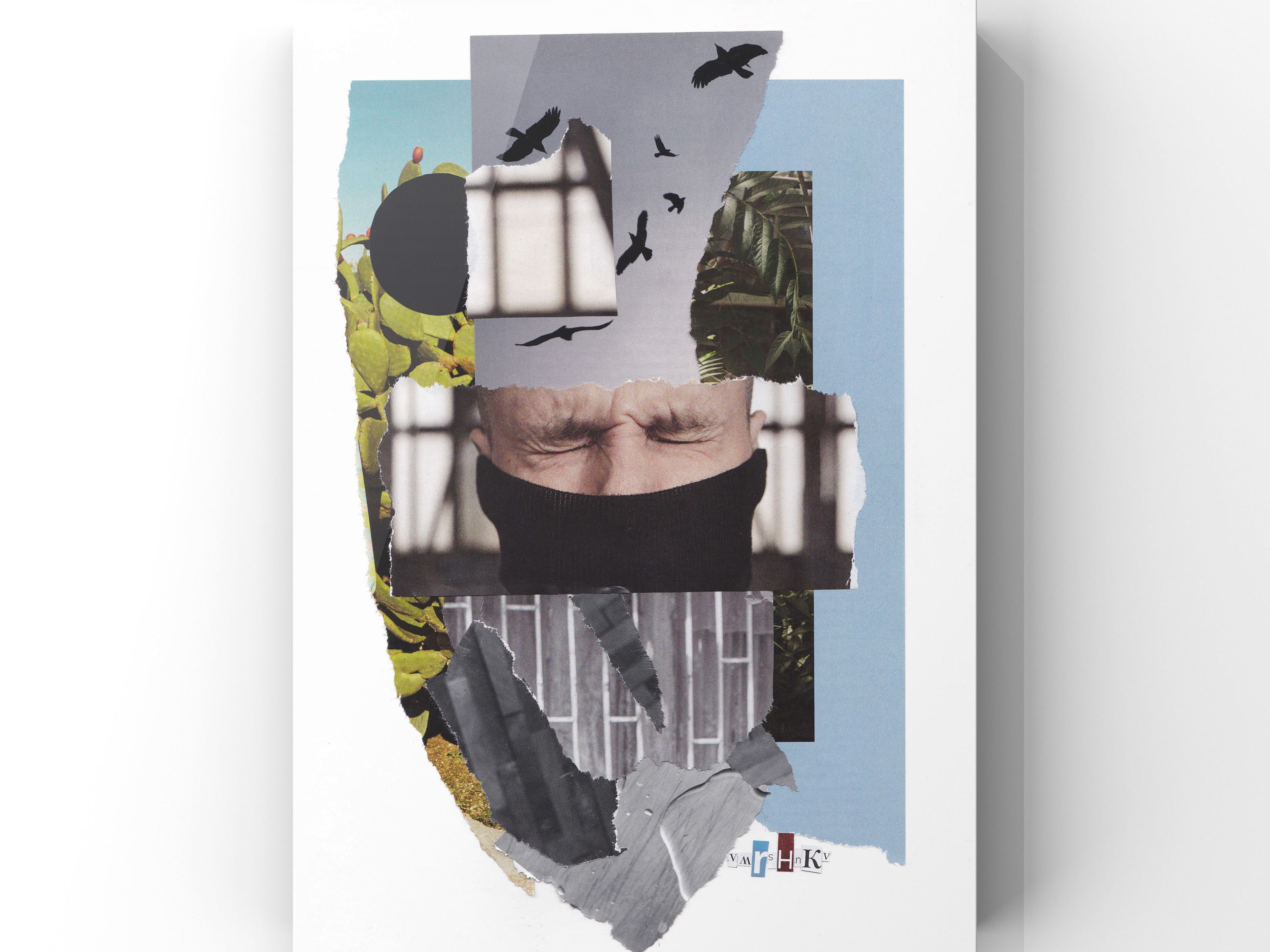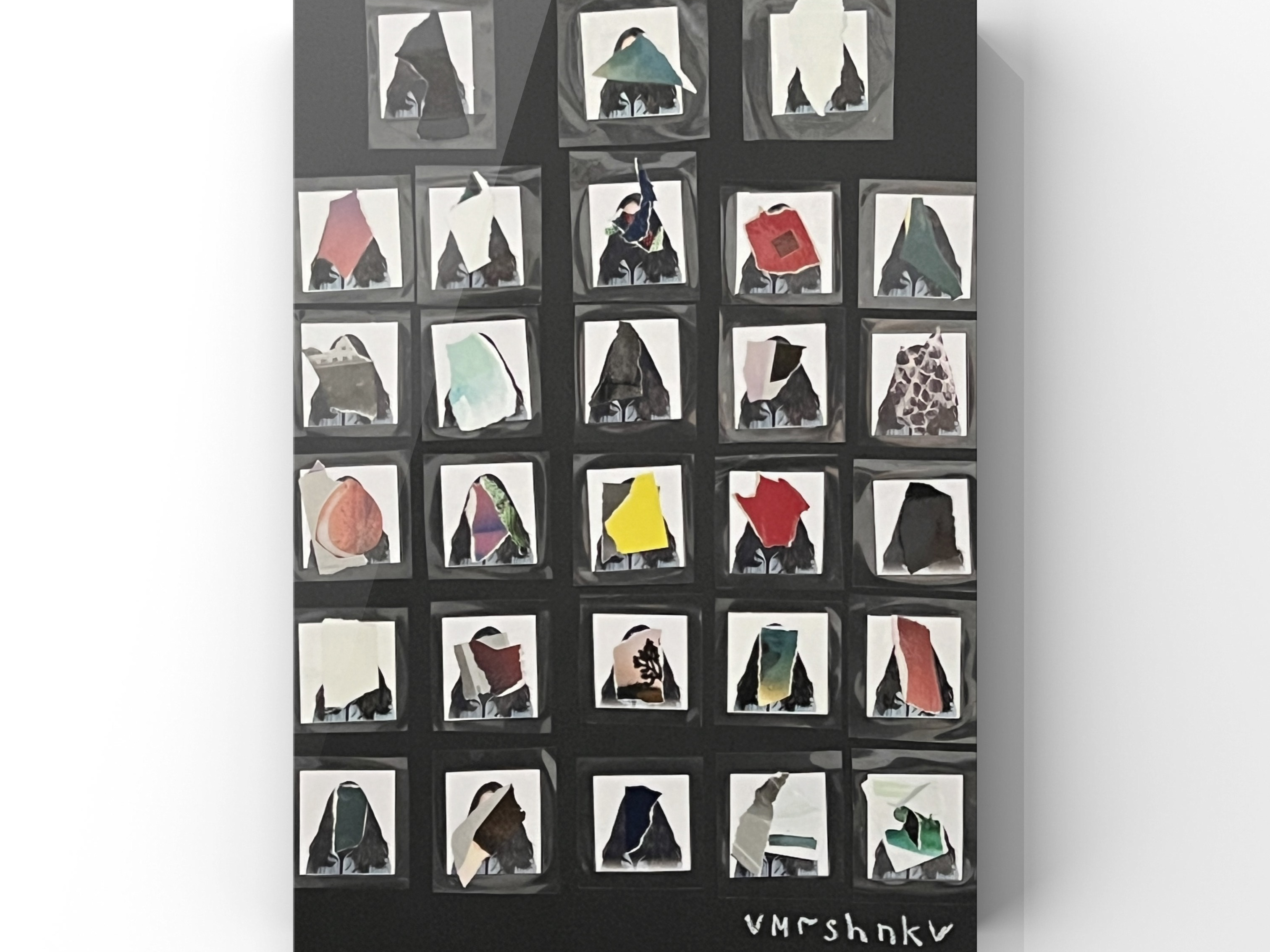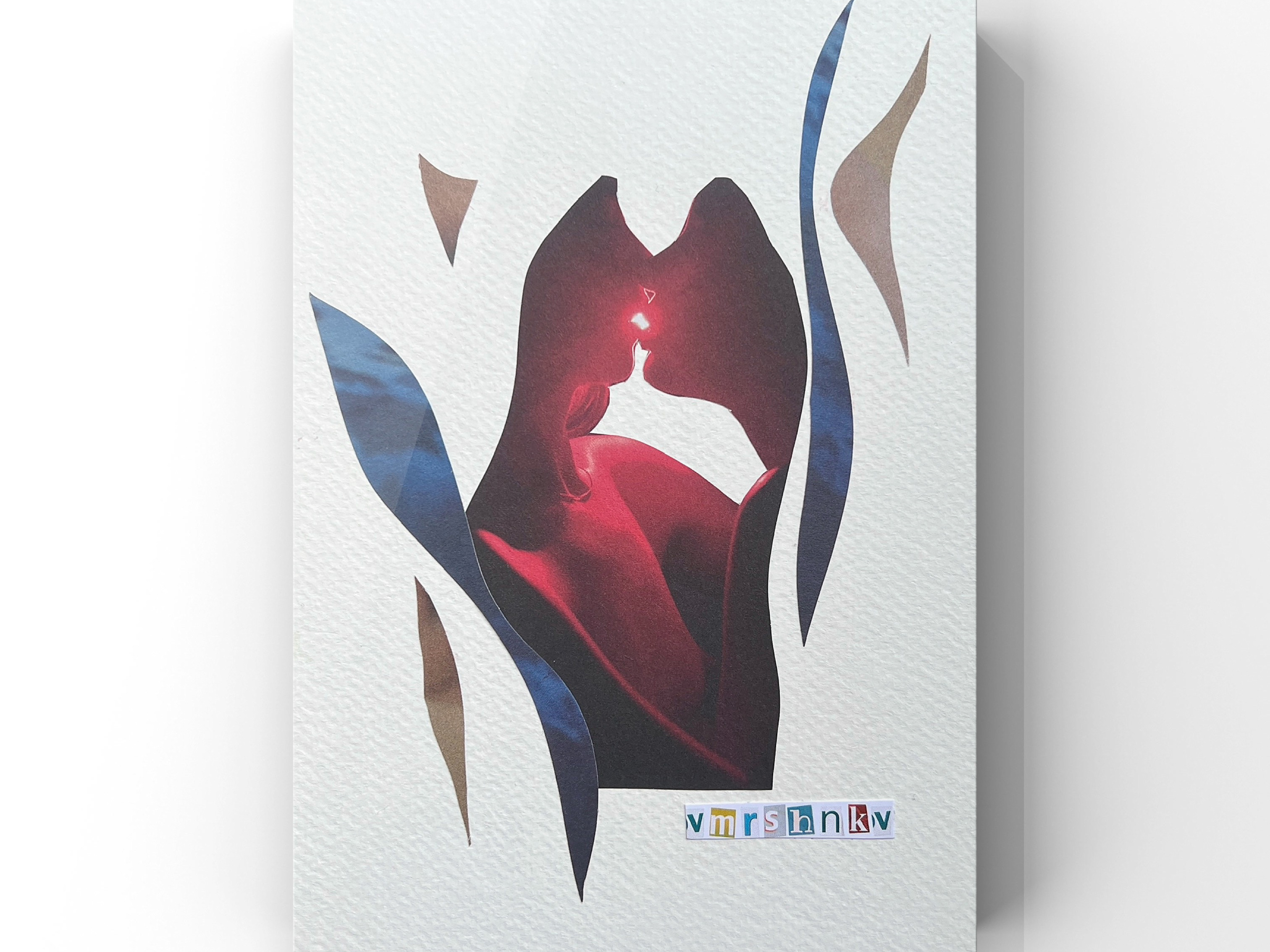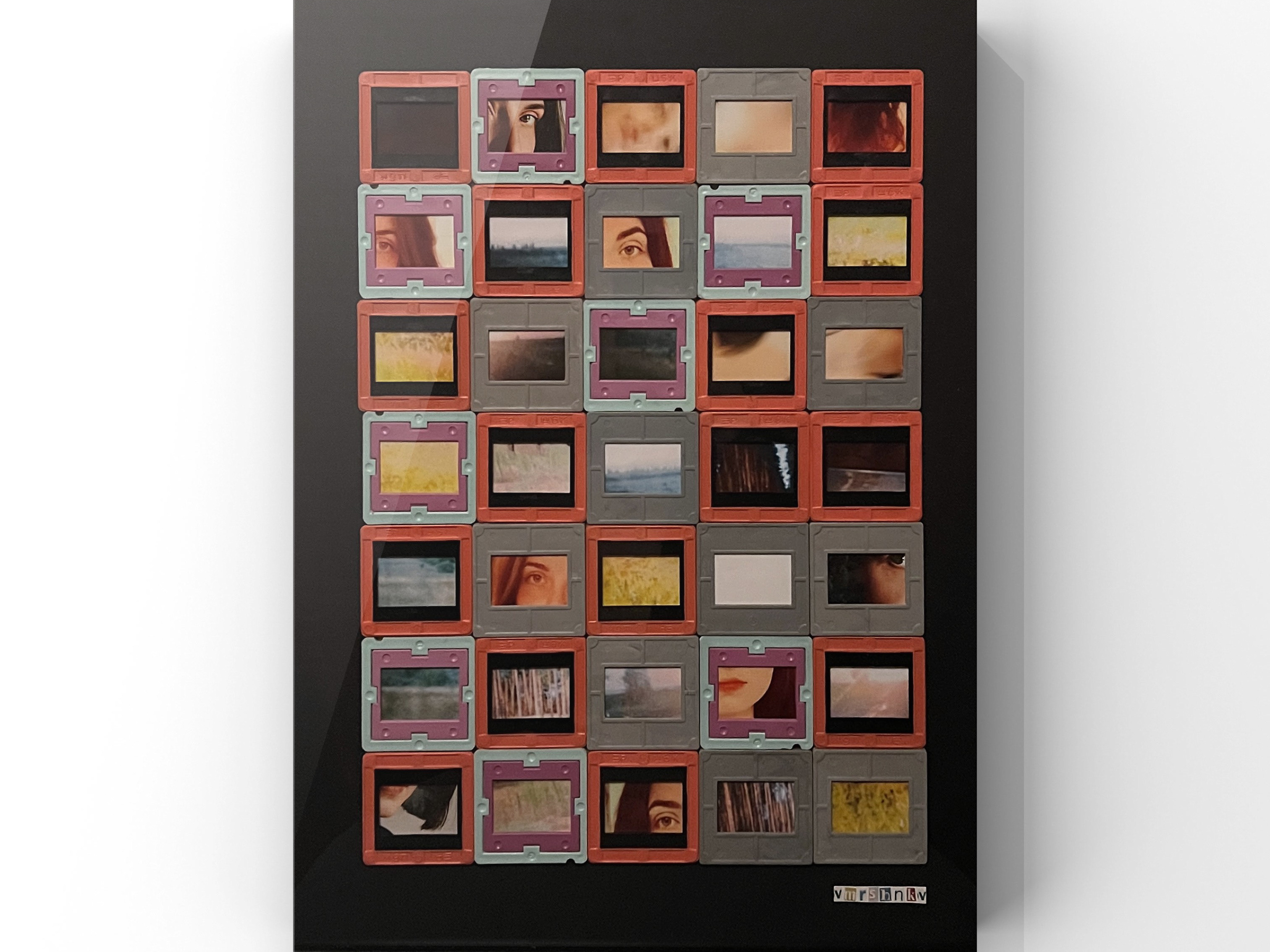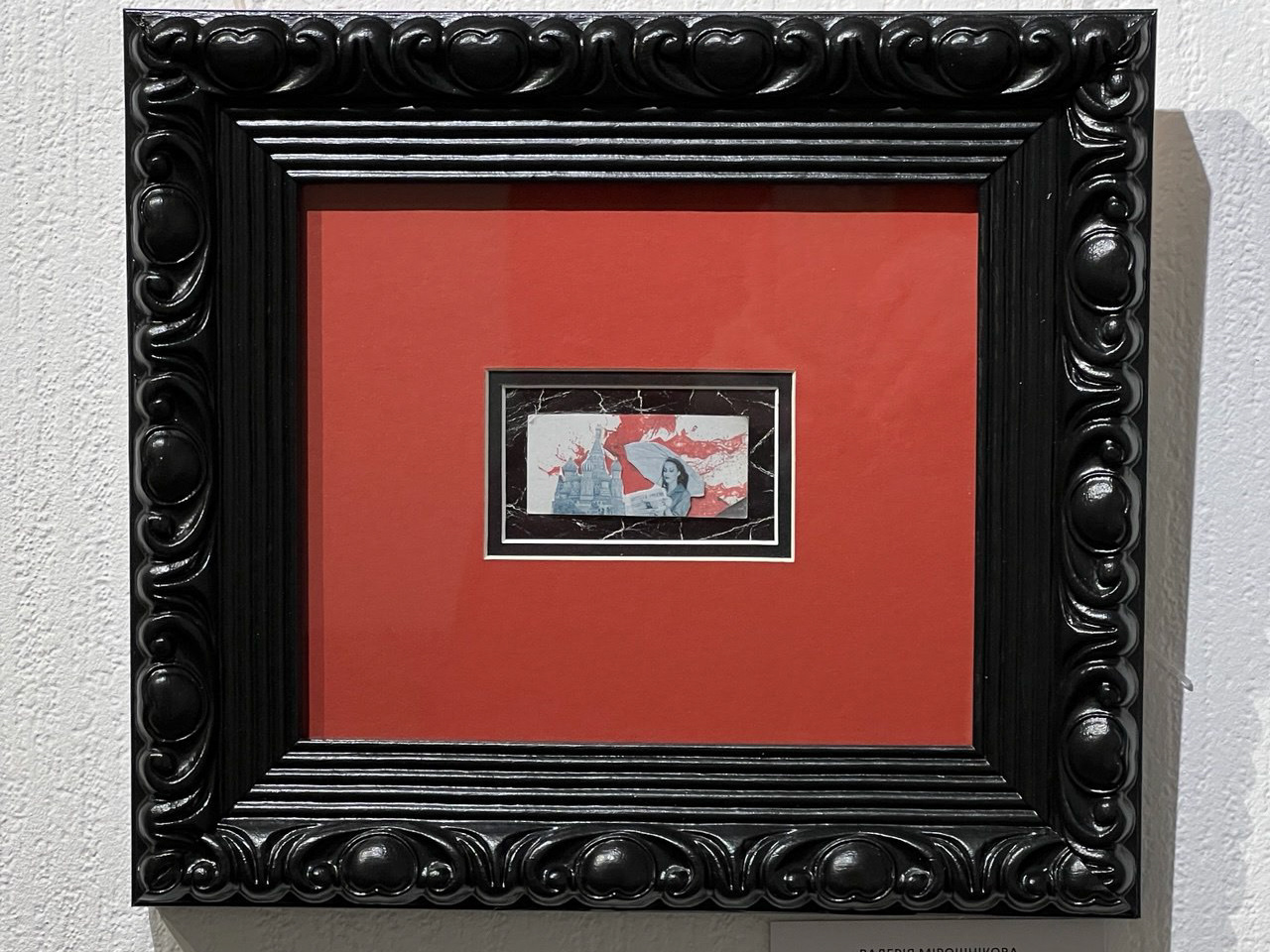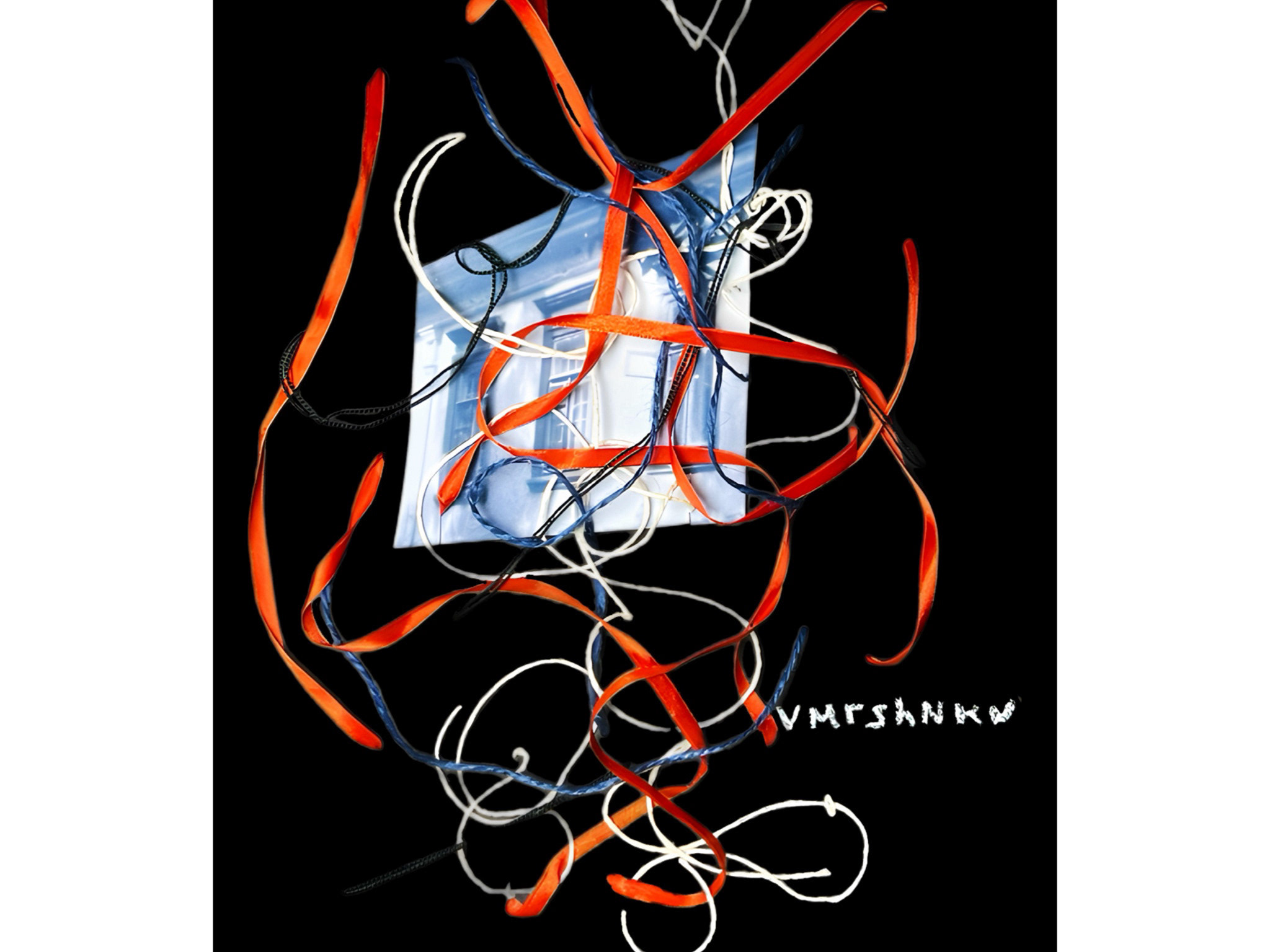
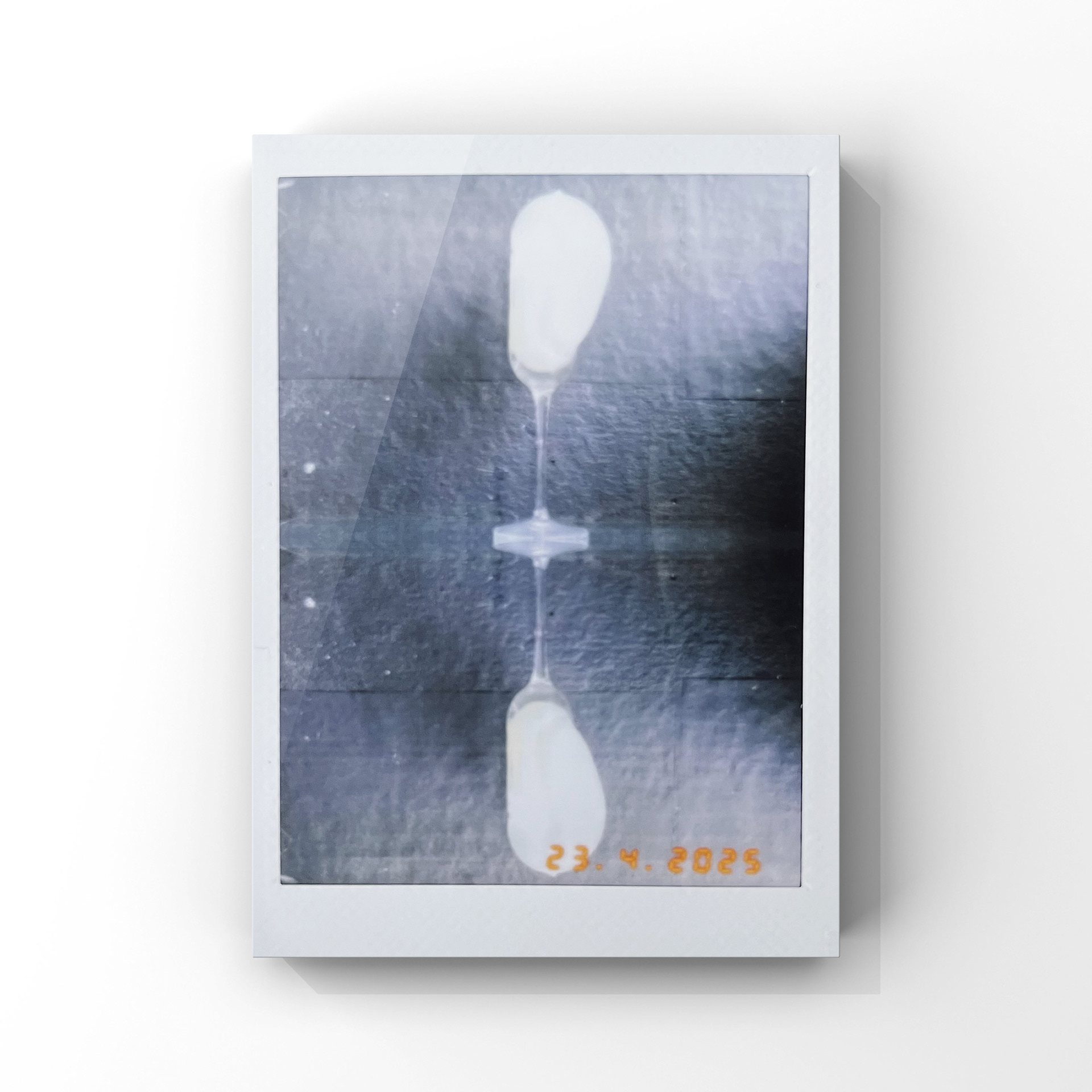
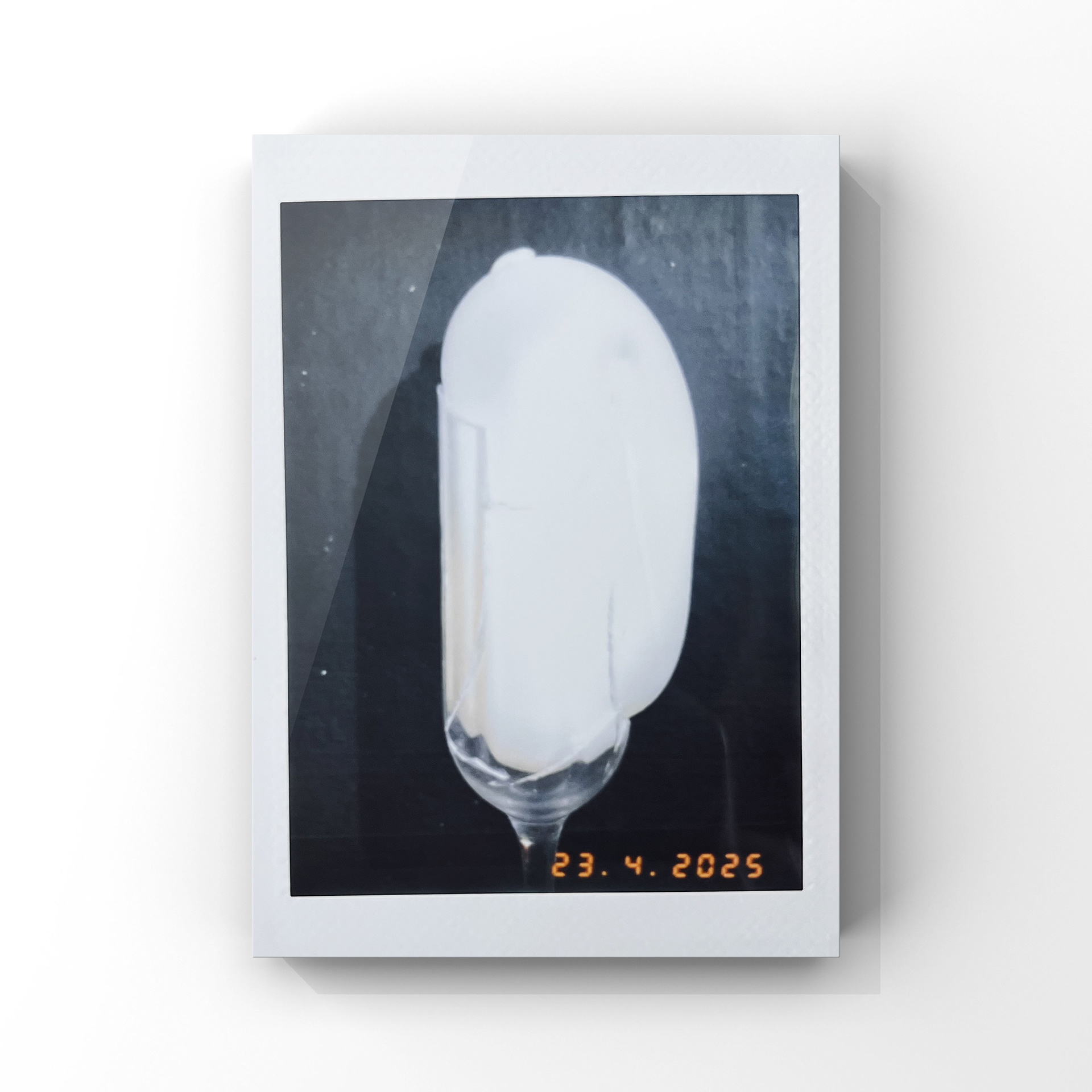

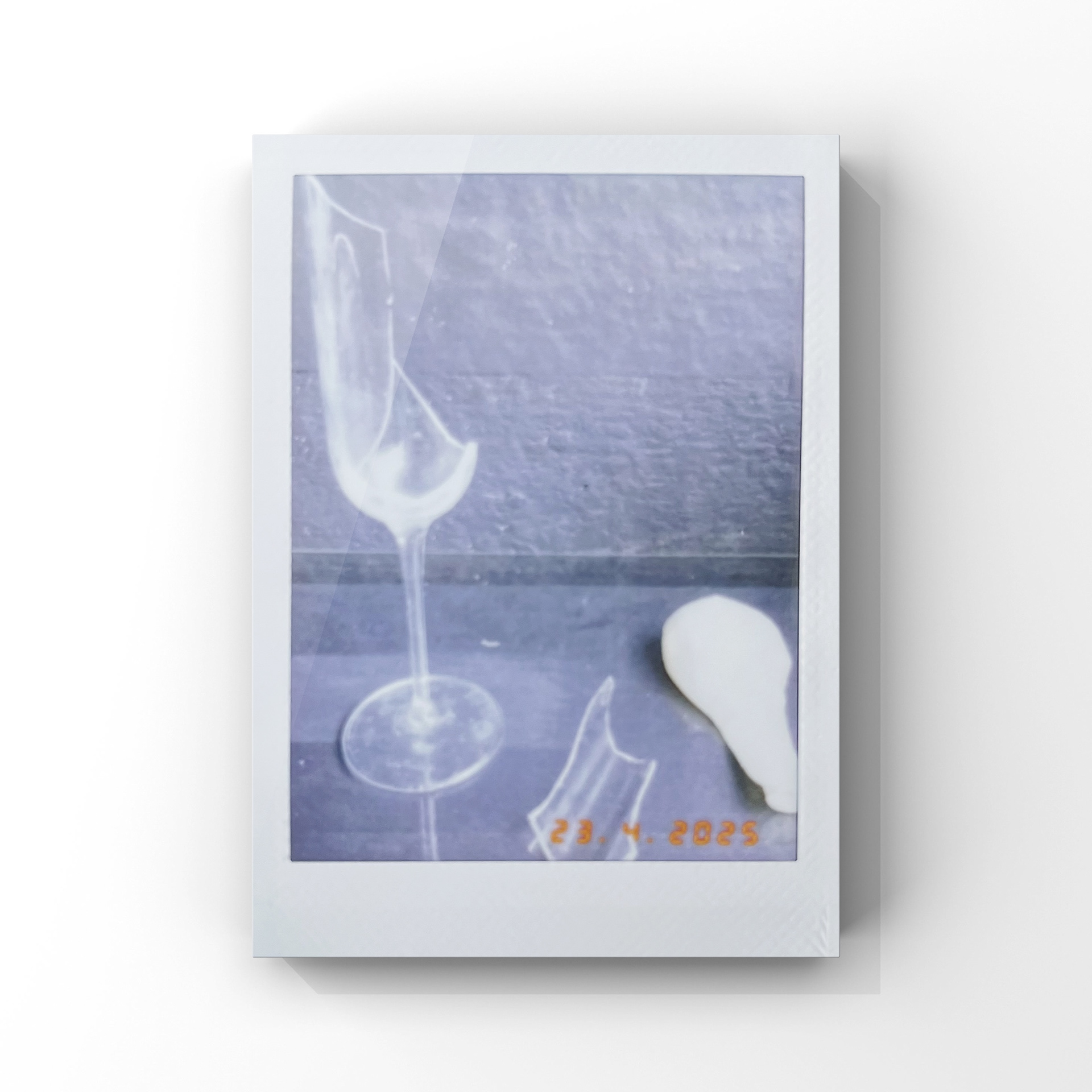
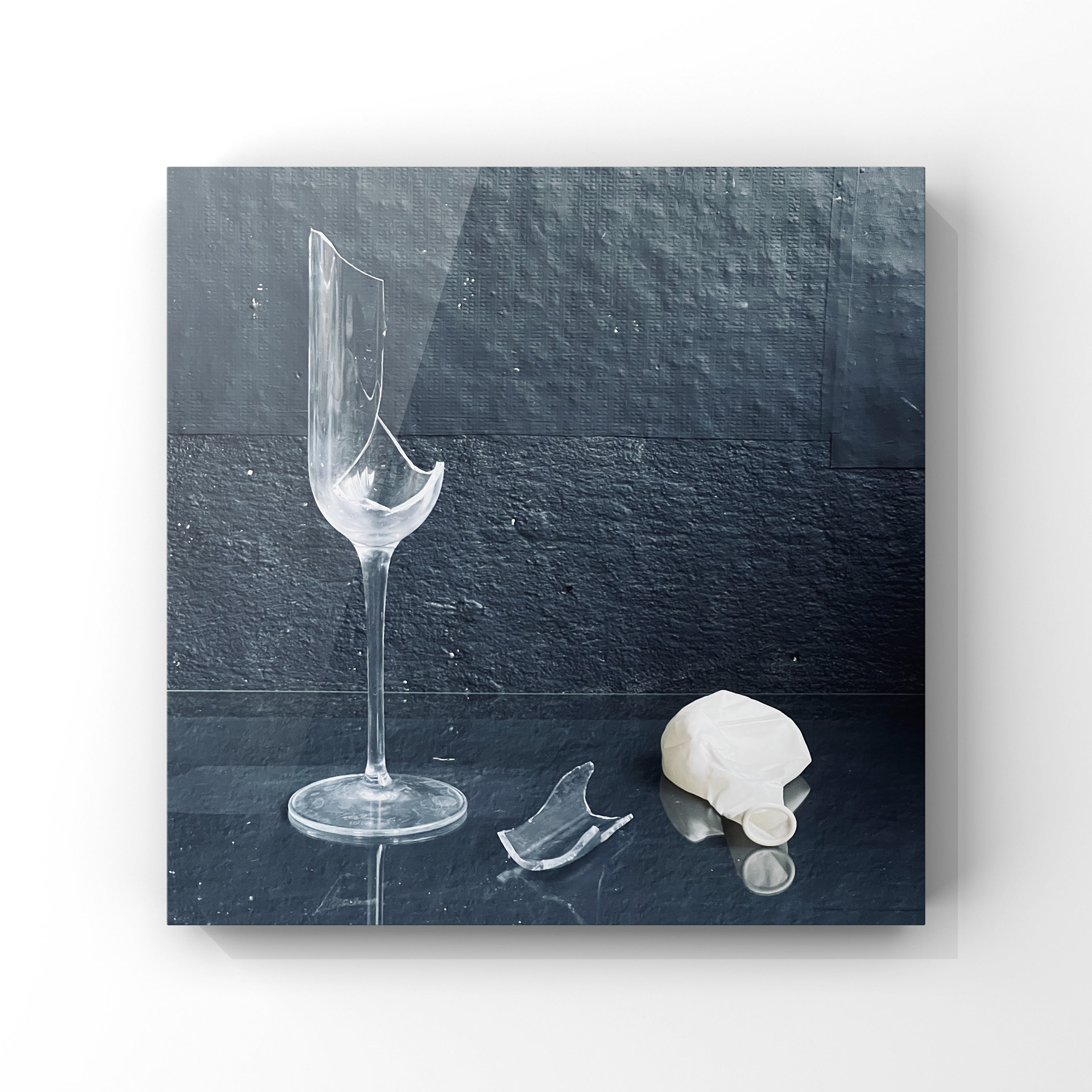
Медіаінсталяція: скляний об’єкт, відео, серія полароїдних світлин
"Келих" — це об’єкт-історія. Мить. Процес. Наслідок. Цей проєкт — візуальна і тілесна метафора ідентичності, що формується через тиск, вразливість, втрати й трансформації.
У центрі інсталяції — скляний келих із повітряною кулькою всередині. Кулька — символ м’якої сили, дихання, адаптації до внутрішніх і зовнішніх викликів. Вона намагається зберегти форму, здаватися цілою, правильною. Але в момент, коли кулька поступово здувається, баланс змінюється: тиск, який здавався майже невидимим, стає визначальним, і келих тріскається — не від сили, а під вагою тиші.
Відео супроводжує цей процес, обертаючи об’єкт у повільному ритмі. Це спроба побачити себе зі сторони, вивчити власні межі, прийняти ламкість як частину себе. Повільна хореографія зламу показує, що руйнування — не крах, а акт зміни.
Серія полароїдних світлин фіксує чотири ключові фази:
Двійність: келих як метафора тілесного й ментального "я".
Близькість: загострене бачення деталей, напруга на межі розриву.
Тріщина: слід досвіду, не слабкість.
Фінал: уламок, кулька, ніжка келиха — те, що залишилося і свідчить про шлях.
"Келих" — це також висловлювання про психічну й національну реальність. Про ламкість, яку ми часто змушені приховувати, але яка насправді є правдивою, живою частиною нас. Дискомфорт і вразливість тут не є вадами — вони стають самостійною формою існування. Нам не потрібно бути цілими, щоб бути справжніми.
Media installation: glass object, video, series of Polaroid photographs
The Glass is an object-story. A moment. A process. A consequence.
This project is a visual and bodily metaphor for identity, shaped through pressure, vulnerability, loss, and transformation.
This project is a visual and bodily metaphor for identity, shaped through pressure, vulnerability, loss, and transformation.
At the heart of the installation is a glass goblet containing a balloon.
The balloon symbolizes soft strength, breath, and the effort to adapt to both internal and external challenges. It strives to maintain its shape, to appear whole and "proper." Yet as the balloon gradually deflates, the balance shifts: pressure, once nearly invisible, becomes decisive, and the glass cracks — not from force, but under the weight of silence.
The balloon symbolizes soft strength, breath, and the effort to adapt to both internal and external challenges. It strives to maintain its shape, to appear whole and "proper." Yet as the balloon gradually deflates, the balance shifts: pressure, once nearly invisible, becomes decisive, and the glass cracks — not from force, but under the weight of silence.
The accompanying video captures this process, rotating the object in a slow rhythm. It is an attempt to observe oneself from the outside, to study one’s limits, to embrace fragility as part of the self.
The slow choreography of breaking reveals that destruction is not collapse — it is an act of transformation.
The slow choreography of breaking reveals that destruction is not collapse — it is an act of transformation.
A series of Polaroid photographs document four key phases:
Duality: the glass as a metaphor for the physical and mental self.
Closeness: an intensified focus on details, tension at the edge of rupture.
Crack: the trace of experience, not a sign of weakness.
Finale: the shard, the balloon, the stem — what remains, bearing witness to the journey.
The Glass is also a statement about psychological and national reality — about the fragility we are often forced to hide, yet which is, in truth, a living, authentic part of us.
Here, discomfort and vulnerability are not flaws — they become a distinct form of existence.
We do not need to be whole in order to be real.
Here, discomfort and vulnerability are not flaws — they become a distinct form of existence.
We do not need to be whole in order to be real.



